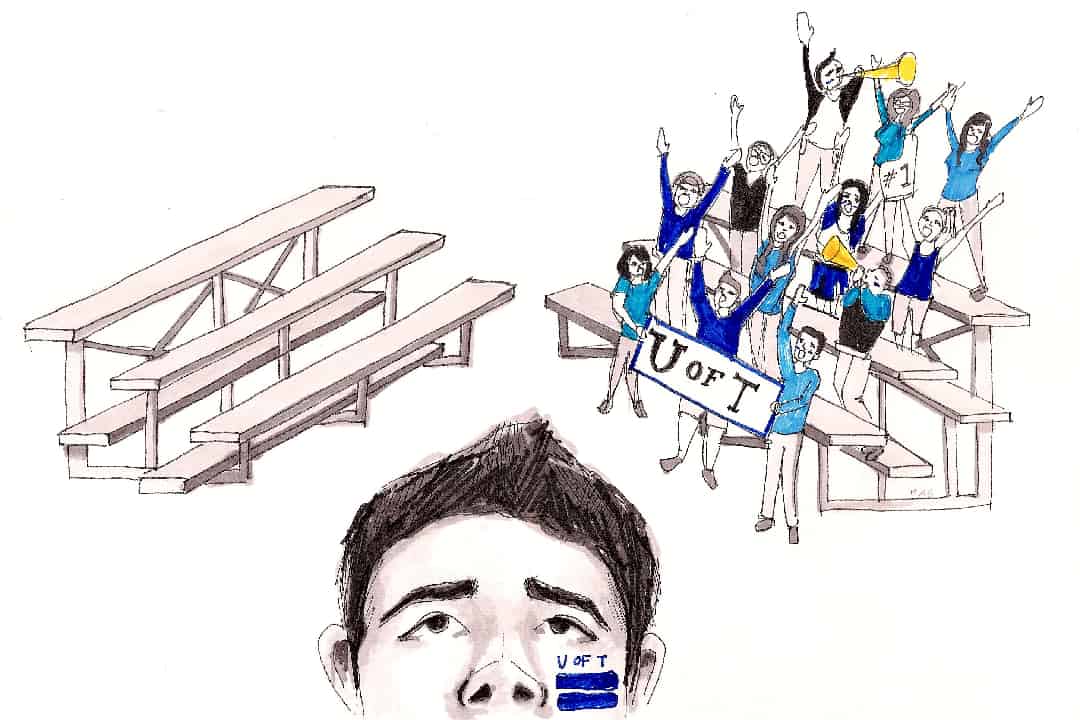Everyone at U of T remembers the first time they thought to themselves, “People here are kind of mean.” From my first day on campus, everyone I have spoken to has shared this experience; in fact, they embrace the first time someone gave them the cold shoulder on campus as a rite of passage.
Indeed, the walk to Robarts Library is tough when it’s -20 degrees Celsius outside, but have you ever asked someone for a pen and they just stared right through you? Ice cold.
However, what U of T lacks in campus unity, it makes up for with extracurricular activities. Leaving aside the plethora of clubs available for students to sign up for, U of T also has the Varsity Blues to offer for sporting entertainment. With the upcoming season being cancelled because of COVID-19, one might ponder how the lack of Varsity Blues events might affect the already dim campus culture.
The truth is, you might not even notice the Varsity Blues missing this year. It would not surprise you to learn that the University of Toronto Varsity Blues suffer from poor attendance records across multiple teams.
According to an article by The Varsity, the 2014 Varsity Blues football team had an average attendance of 2,240 people, less than half of the stadium’s maximum capacity. If that isn’t bad enough, the 2014 Varsity Blues men’s hockey team had a paltry attendance average of 139 people, less than four per cent of the maximum capacity.
This is not to say that Varsity Blues events are a sombre affair. In fact, last year, some of my best times on campus came at Varsity Blues events. With the launch of the Varsity Blues Rewards app, U of T helped incentivize attendance by giving students prizes and reward points just for showing up.
The problem, however, goes beyond student pride or a lack thereof: U of T struggles to advertise events. In fact, if you don’t follow any of the U of T social media pages, you might never hear of the Blues your entire time at this school, aside from a flyer or two. To place the blame solely on students for a lack of attendance would be to give the school too much credit.
The fact of the matter is that there is a lot of discussion to be had over the school’s lack of student culture and how the Blues can play a key role in bolstering it.
Students at U of T have no problem discussing the lack of student culture — until and unless it comes to the debate over which school is the ‘best’ in Canada. But, in that debate lies the ultimate problem of student culture on campus: individual bragging rights have always come first. Students are never going to show ‘school spirit’ and cheer on their sports teams because most students really only see themselves as an individual on campus, not a member of a community.
According to a 2018 Varsity article, over 75 per cent of students identify as commuters. When most students are gone before the Varsity Blues even kick off, attendance is doomed to be mediocre unless the teams are successful or hyped up.
With the Varsity Blues presumably off the field in the coming year, and with students gearing up to study from home in these unprecedented times, the discussion about student culture must be had. While we could be shocked at the attendance numbers for the Varsity Blues, we should instead consider ways to increase the number of students in the seats. But this can only be done by first examining and reimagining student pride here at U of T.


